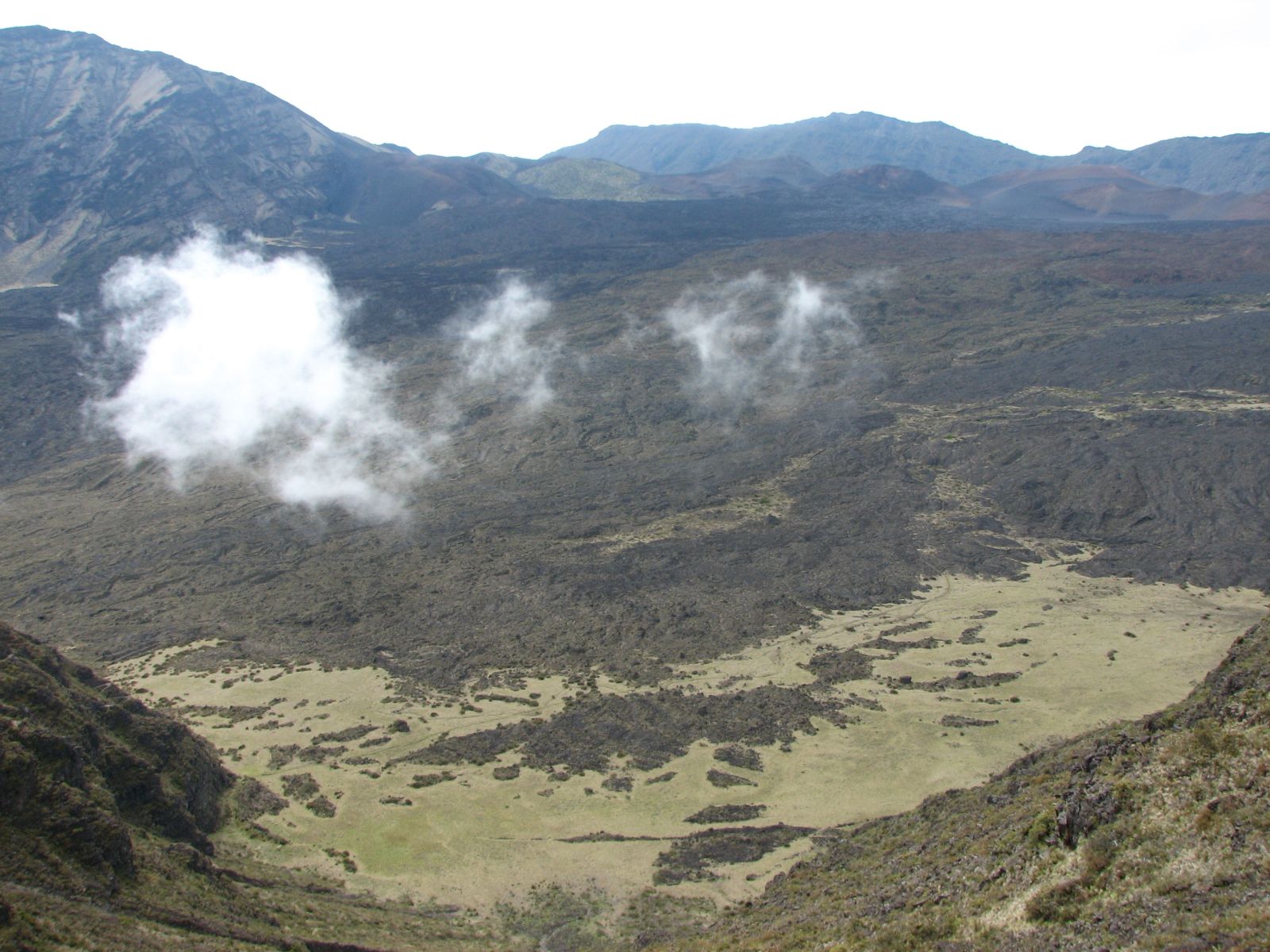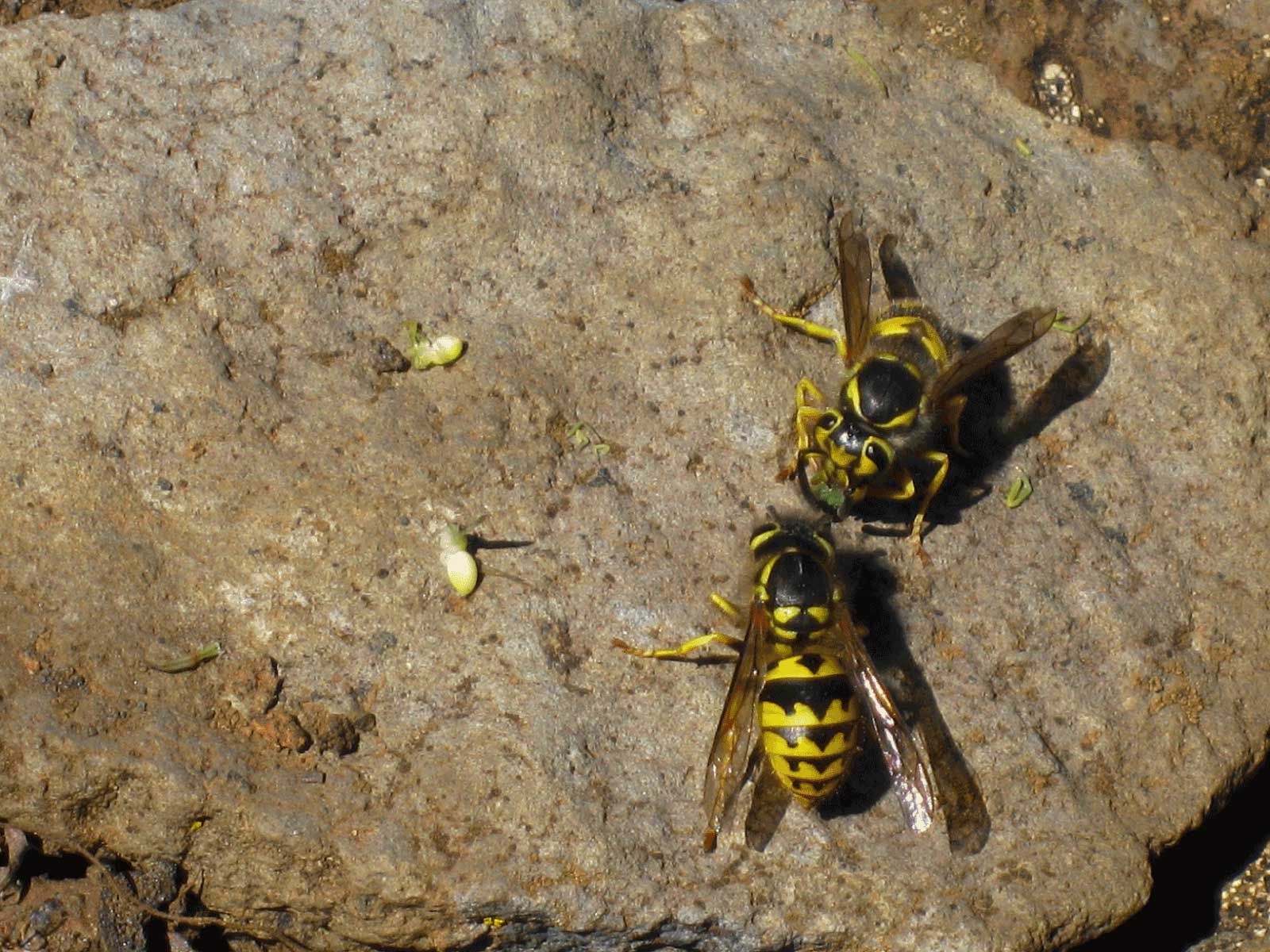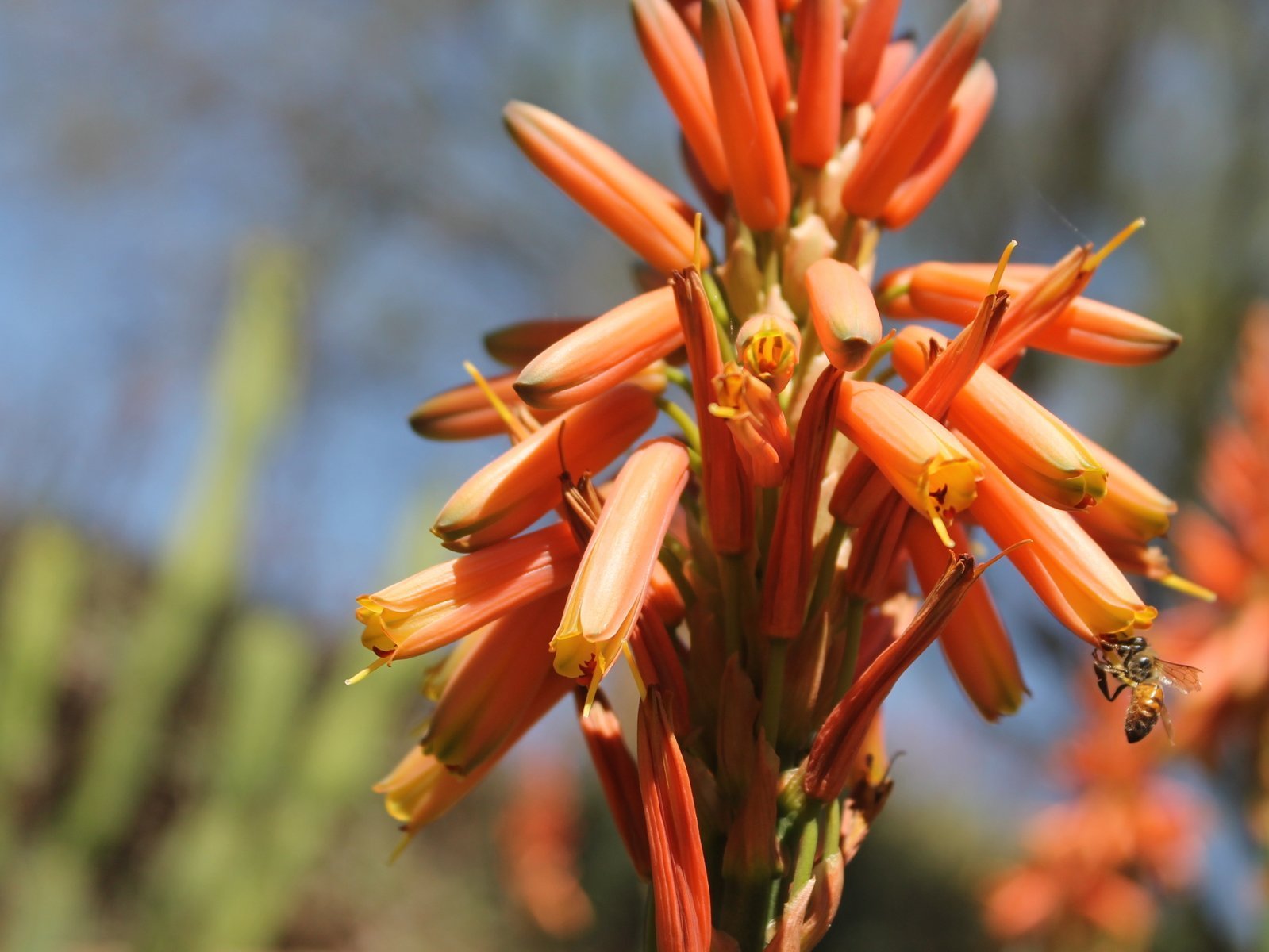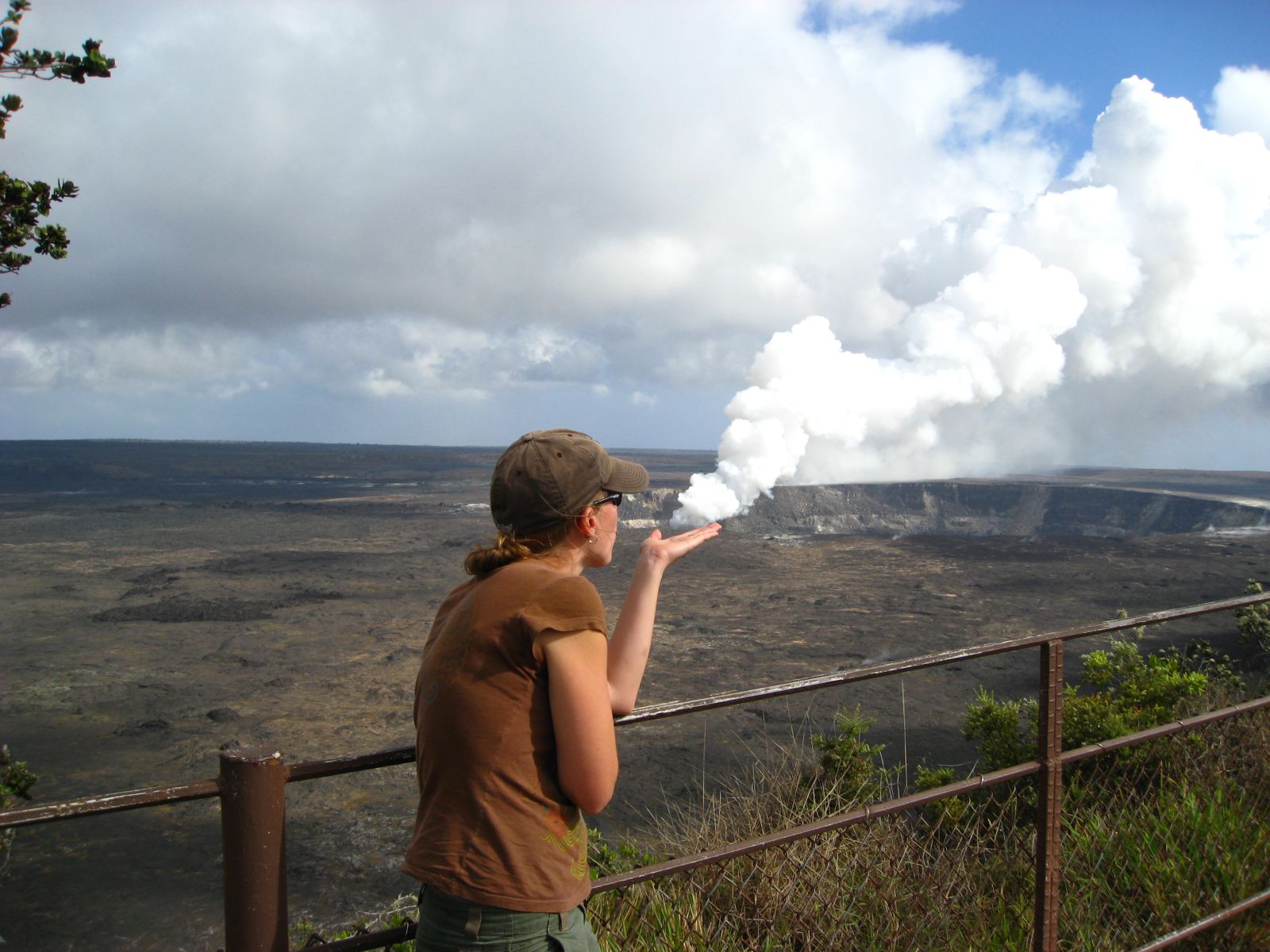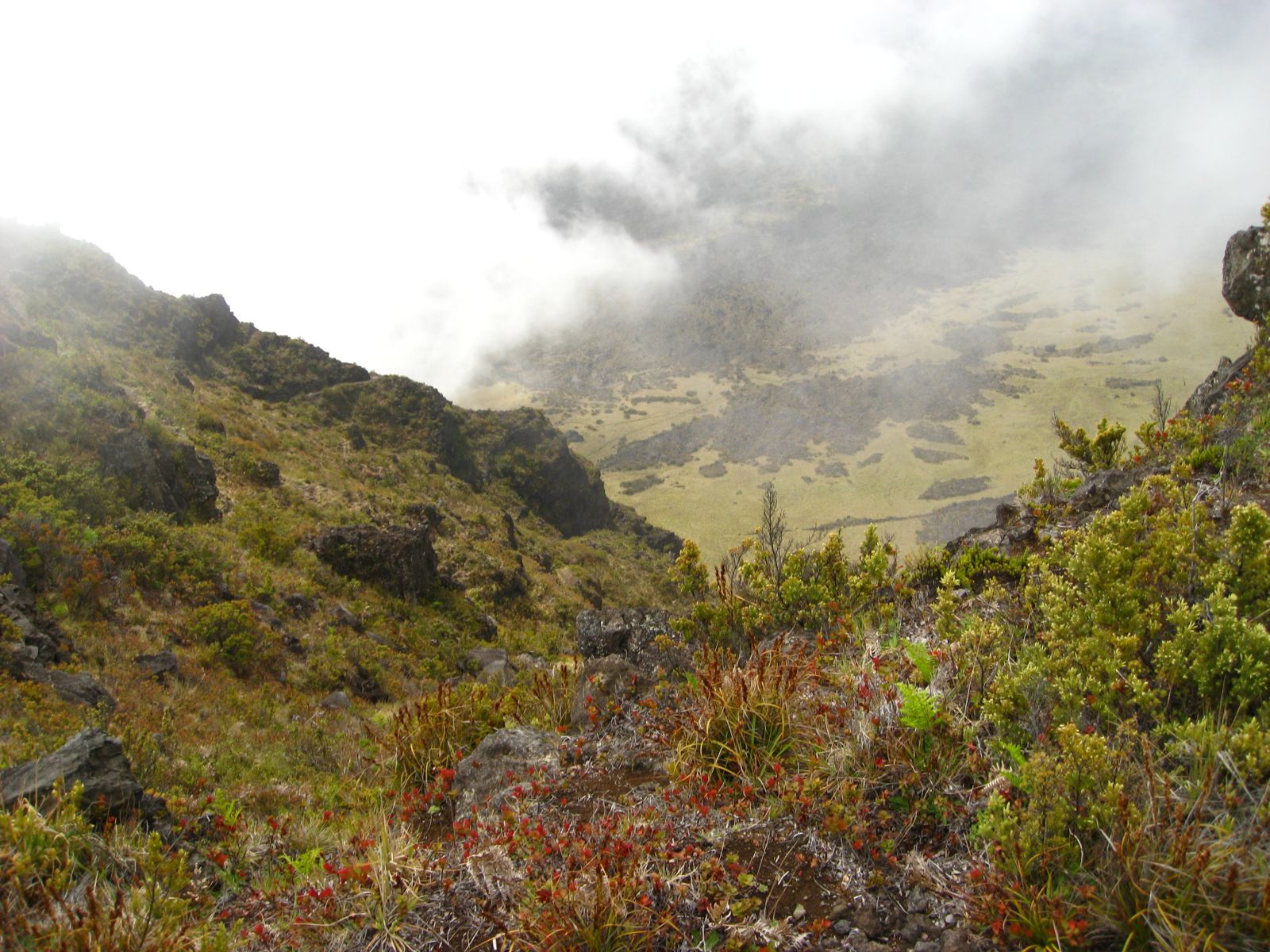Publications
2024
Saldivar, J.A. and
E. E. Wilson-Rankin. (2024) Struggling to survive: A comparison of
Vanessa cardui larval survivorship on putative host plants
.
Ecosphere.15(3): e4810.
10.1002/ecs2.4810Saldivar, J.A., D.T. Rankin and
E. E. Wilson-Rankin. (2024) Sites dominated by common fiddleneck (
Amsinckia menziesii var.
intermedia) support diverse plant-pollinator interactions.
Plant Ecology.225: 536-542.
10.1007/s11258-024-01408-72023
Byrd, D., M. Tran, J. R. Kenney,
E. E. Wilson-Rankin, and K. E. Mauck. (2023) The aphid
Myzus persicae (Hemiptera: Aphididae) acquires chloroplast DNA during feeding on host plants.
Environmental Entomology.52(5): 900-906.
10.1093/ee/nvad086Orr, M. C., K.-L. J. Hung,
E. E. Wilson-Rankin, P. M. Simpson, D. Yanega, A. Y. Kim, and J. S. Ascher (2023) Scientific note: First mainland records of an unusual island bee (
Anthophora urbana clementina) highlight the value of community science for adventive species detection and monitoring.
Apidologie. 54:46.
10.1007/s13592-023-01025-9Norris, R. H., C. S. Silva-Torres, M. Lujan,
E. E. Wilson-Rankin, and K. E. Mauck. (2023) Footprints of predatory lady beetles stimulate increased dispersal of aphid prey, but do not alter feeding behavior or spread of a non-persistently transmitted plant virus.
Food Webs. 37:e00325.
10.1016/j.fooweb.2023.e00325Wilson Rankin, E.E. JL Knowlton, AJ Shmerling and R Hoey-Chamberlain (2023) Diets of two non-native praying mantids (
Tenodera sinensis and
Mantis religiosa) show consumption of arthropods across all ecological roles.
Food Webs. 35: e00280
10.1016/j.fooweb.2023.e00280
Argueta-Guzman, M., West, M., Gaiarsa, M.P., Allen, C.W., Cecala, JM, Gedlinske, L., McFrederick, QS, Murillo, AC, Sankovitz, M and
Wilson Rankin, E.E. and Rankin, D.T. (2023) Words matter: how ecologists discuss managed and non-managed bees and birds.
Scientometrics. 128: 1745-1764
10.1007/s11192-022-04620-2Wilson Rankin, E.E. and Rankin, D.T. (2023) Secondary nectar robbing by Lycaenidae and Riodinidae: Opportunistic but not infrequent.
Ecology. 104(2): e3892
10.1002/ecy.3892
Sankovitz, M., KJ Loope,
Wilson Rankin, E.E. and Purcell,J. (2023) Unequal reproduction early in a social transition: insights from invasive wasps.
American Naturalist. 201(2): 241-255
10.1086/722514Garcia, K., Olimpi, E. M., M'Gonigle, L., Karp, D. S.,
Wilson Rankin, E.E., Kremen, C., & Gonthier, D. J. (2023) Semi-natural habitats on organic strawberry farms and in surrounding landscapes promote bird biodiversity and pest control potential.
Agriculture, Ecosystems & Environment 347: e108353.
10.1016/j.agee.2023.108353Miner, MC and
Wilson Rankin, E.E. (2023) Bumble Bee Avoidance of Argentine Ants and Associated Chemical Cues.
Journal of Insect Behavior. 36: 20-32
10.1007/s10905-023-09815-wSidhu, C.,Lozano, GE, Miner, MC, Howe, E, and
Wilson Rankin, E.E. (2023) Pollination ecology of island endemic lants: a case study on the California Channel Islands.
Western North American Naturalist. Available at:
https://scholarsarchive.byu.edu/wnan/vol82/iss4/12022
Saldivar, J., A. Romero, and
Wilson Rankin, E.E. (2022) Community science reveals high diversity of nectaring plants visited by painted lady butterflies (
Vanessa cardui) in California sage scrub.
Environmental Entomology.201(2): 241-255
10.1093/ee/nvac073Knowlton, JL, RE Crafford, BA Tinoco, PS Padron, and
EE Wilson Rankin. (2022) High foraging fidelity and plant-pollinator network dominance of non-native honey bees (
Apis mellifera) in the Ecuadorian Andes.
Neotropical Entomology. 51: 795-800
10.1007/s13744-022-00967-6Smith, O; Kennedy, CM.; Echeverri, A; Karp, D; Latimer, C ; Taylor, J;
Wilson Rankin, EE, Owen, JP and WE Snyder. 2022. Complex landscapes stabilize farm bird communities and their expected ecosystem services.
Journal of Applied Ecology 59(4): 927-941
10.1111/1365-2664.14104J. M. Cecala and
E. E. Wilson Rankin. 2022. Diversity and turnover of wild bee and ornamental plant assemblages in commercial plant nurseries.
Oecologia 198(3): 773-783
10.1007/s00442-022-05135-6J Taylor, J., OM Smith, M. Edworthy, CM Kennedy, CE Latimer, JP Owen
E. E. Wilson Rankin and WE Snyder. 2022. Bird predation and landscape context shape arthropod communities on broccoli.
Ornthithological Applications 24(2): duac005
10.1093/ornithapp/duac005J. M. Cecala and
E. E. Wilson Rankin. 2022. Petals and leaves: quantifying the use of nest building materials by the worlds most valuable solitary bee.
Ecology e03584
10.1002/ecy.3584 Smith, O., E. M. Olimpi, N. Navarro-Gonzalez, K. A. Cornell, L. O. Frishkoff, T. D. Northfield, T. M. Bowles, A. Edworthy, J. E. Z. Fu, K. Garcia, D. J. Gonthier, M. S. Jones, C. M. Kennedy, C. E. Latimer, J. P. Owen, C. Sato, J. M. Taylor,
E. E. Wilson Rankin, W. E. Snyder, and D. S. Karp. 2022. A trait-based framework for predicting food safety risks associated with wild birds.
Ecological Applications. 10.1002/eap.25232021
Spence, A. R.,
E. E. Wilson Rankin, and M. W. Tingley. 2021. DNA metabarcoding reveals broadly overlapping diets in three sympatric North American hummingbirds.
Ornithology 139.
10.1093/ornithology/ukab074Scarparo, G., M. Sankovitz, K. J. Loope,
E. E. Wilson Rankin, and J. Purcell. 2021. Early queen joining and long-term queen associations in polygyne colonies of an invasive wasp revealed by longitudinal genetic analysis.
Evolutionary Applications. 14:2901-2914.
10.1111/eva.13324Cecala, J. M., and
E. E. Wilson Rankin. (2021) Wild bee functional diversity and plant associations in native and conventional plant nurseries.
Ecological Entomology 46:1283-1292.
10.1111/een.13074Cecala, J. M., and
E. E. Wilson Rankin. (2021) Pollinators and plant nurseries: how irrigation and pesticide treatment of native ornamental plants impact solitary bees.
Proceedings of the Royal Society B: Biological Sciences 288(1955): e20211287.
10.1098/rspb.2021.1287Rothman, J. A., K. J. Loope, Q. S. McFrederick, and
E. E. Wilson Rankin. (2021) Microbiome of the wasp
Vespula pensylvanica in native and invasive populations, and associations with Moku virus.
Plos One 16:e0255463.
10.1371/journal.pone.0255463Kim AY, Rankin DT,
Wilson Rankin EE. (2021) What is that smell? Hummingbirds avoid foraging on resources with defensive insect compounds.
Behavioral Ecology and Sociobiology. 75:132. doi:
10.1007/s00265-021-03067-4Wilson Rankin EE. (2021) Emerging patterns in social wasp invasions.
Current Opinion in Insect Science. 46:72-77. doi:
10.1016/j.cois.2021.02.014
Muletz-Wolz CR,
Wilson Rankin EE, McGrath-Blaser S, Venkatraman M, Maldonado JE, Gruner DS, Fleischer RC. (2021) Identification of novel bacterial biomarkers to detect bird scavenging by invasive rats. (2021).
Ecology and Evolution. 11:1814-1828. doi:
10.1002/ece3.7171Loope KJ,
Wilson Rankin EE. (2021) Viral load, not food availability or temperature, predicts colony longevity in an invasive eusocial wasp with plastic life history.
Scientific Reports. 11:e10087. doi:
10.1038/s41598-021-89607-4Barney S, Leopold D, Francisco K, Flaspohler D, Fukami T, Giardina C, Gruner D, Knowlton J, Pitt W,
Wilson Rankin EE. (2021) Successful management of invasive rats across a fragmented landscape.
Environmental Conservation. 48:1-8. doi:
10.1017/S0376892921000205Hazlehurst JA, Rankin DT, Clark CJ, McFrederick QS and
Wilson Rankin EE. (2021) Macroecological patterns of resource use in resident and migratory hummingbirds.
Basic and Applied Ecology. doi:
10.1016/j.baae.2021.01.0032020
Phan P, Purcell J and
Wilson Rankin EE. (2020)
Formica francoeuri responds to pheromones and defensive chemical cues of social bees.
Insectes Sociaux 67: 547-556. doi:
10.1007/s00040-020-00788-zWilson Rankin, EE, Barney SK and Lozano GE. (2020). Reduced water negatively impacts social bee survival and productivity via shifts in floral nutrition.
Journal of Insect Science. 20(5): e15. doi:
10.1093/jisesa/ieaa114
Cecala JM, Baronia DA and
Wilson Rankin EE. (2020) Sugar content of diet does not buffer against chronic oral imidacloprid exposure in the alfalfa leafcutting bee (Hymenoptera: Megachilidae).
Journal of Economic Entomology. 113: 2705-2712. doi:
10.1093/jee/toaa194Wilson Rankin EE, Cecala JM, Hernandez Pineda N, Lu QY, Pelayo E and Choe D-H (2020). Differential feeding responses of several bee species to sugar sources containing iridomyrmecin, an Argentine ant trail pheromone component.
Journal of Insect Behavior. 33:83-90. doi:
10.1007/s10905-020-09748-8
Harrop TWR, Guhlin J, McLaughlin GM, Permina E, Stockwell P, Gilligan J, Le Lec MF, Gruber MAM, Quinn O, Lovegrove M, Duncan EJ, Remnant EJ, Van Eeckhoven J, Graham B, Knapp RA, Langford KW, Kronenberg Z, Press MO, Eacker SM,
Wilson-Rankin EE, Purcell J, Lester PJ and Dearden PK (2020) High-quality assemblies for three invasive social wasps from the
Vespula genus.
G3: Genes|Genomes|Genetics 10: 3479-3488. doi:
10.1534/g3.120.401579Cecala, J. M., and
Wilson Rankin, Erin E (2020) Mark-recapture experiments reveal foraging behavior and plant fidelity of native bees in plant nurseries.
Ecology e03021. doi:
10.1002/ecy.3021Olimpi EM, Garcia K, Gonthier DJ, De Master KT, Echeverri A, Kremen C, Sciligo AR, Snyder WE,
Wilson-Rankin EE, Karp DS. (2020) Shifts in species interactions and farming contexts mediate net effects of birds in agroecosystems.
Ecological Applications e02115. doi:
10.1002/eap.21152019
Bodden J, Hazlehurst JA, Wilson Rankin Erin E (2019) Floral traits predict frequency of defecation on flowers by foraging bumble bees. Journal of Insect Science 19:e2 doi:10.1093/jisesa/iez091
Loope, K. J., J. W. Baty, P. J. Lester, and E. E. Wilson Rankin. 2019. Pathogen shifts in a honeybee predator following the arrival of the Varroa mite. Proceedings of the Royal Society B: Biological Sciences. 286(1894):20182499.
2018 and earlier
Wilson-Rankin EE, Knowlton JL, Flaspohler DJ, Buckhardt A, Fukami T, Giardina CP, Gruner DS, Pitt WC. 2018. Hawaiian forest birds show vertical niche partitioning via behavioral plasticity in response to invasive rats across a gradient of forest patch size. PLoS One. 13(9): e0202869.
Melgarejo V, Wilson-Rankin EE, Loope KJ. 2018. Do queen cuticular hydrocarbons inhibit worker reproduction in Bombus impatiens? Insectes Sociaux. 65: 601-608.
Johnston CA, Wilson-Rankin EE, Gruner DS. 2018. Foraging connections: Patterns of prey use linked to invasive predator diel movement. PLoS One. 13: e0201883.
Miller SE, Bluher SE, Bell E, Cini A, Silva RCD, de Souza AR, Gandia KM, Jandt J, Loope K, Prato A, Pruitt JN, Rankin D, Wilson-Rankin EE, Southon RJ, Uy FMK, Weiner S, Wright CM, Downing H, Gadagkar R, Lorenzi MC, Rusina L, Sumner S, Tibbetts EA, Toth A, Sheehan MJ 2018. WASPnest: a worldwide assessment of social Polistine nesting behavior. Ecology. 99:2405. doi: 10.1002/ecy.2448
Sidhu, CS & EE Wilson Rankin. 2018. Distribution and characterization of wild bee nesting sites on San Clemente Island, California Channel Islands. Western North American Naturalist. 78(4): 811–819.
Loope, K. J., J. G. Millar, & EE Wilson Rankin. 2018. Weak nestmate discrimination behavior in native and invasive populations of a yellowjacket wasp (Vespula pensylvanica). Biological Invasions. 20: 3431. doi: 10.1007/s10530-018-1783-3
Levan, K. E., S. K. Barney, & EE Wilson Rankin. 2018. Introduced ants reduce interaction diversity in a multi-species, ant-aphid mutualism. Oikos. 127: 1132–1141.
Merrill, K. C., C. L. Boser, C. Hanna, D. A. Holway, I. Naughton, D. Choe, & EE Wilson Rankin. 2018. Argentine Ant (Linepithema humile, Mayr) Eradication Efforts on San Clemente Island, CA, USA. Western North American Naturalist. 78(4): 829–836.
Rankin, D. T., C. J. Clark, & EE Wilson Rankin. 2018. Hummingbirds use taste and touch to discriminate against nectar resources that contain Argentine ants. Behavioral Ecology and Sociobiology. 72:e44.
Knowlton, J. L., D. J. Flaspohler, E. H. Paxton, T. Fukami, C. P. Giardina, D. S. Gruner, & EE Wilson Rankin. 2017. Movement behavior of native Hawaiian birds in a naturally fragmented landscape. Journal of Avian Biology . 48: 920-931.
Dobelmann, J., K. J. Loope, EE Wilson Rankin, O. Quinn, J. W. Baty, M. A. M. Gruber, & P. J. Lester. 2017. Fitness in invasive social wasps: the role of variation in viral load, immune response and paternity in predicting nest size and reproductive output. OIKOS. 126: 1208-1218
Sidhu, C.S., S.M. Calloway, S.K. Barney & EE Wilson Rankin. 2016. Host records of Grammia ursina Schmidt, 2009 on San Clemente Island and its potential effect on rare plant restoration (Lepidoptera: Noctuidae: Arctiinae). Pan Pacific Entomologist. 92(3): 151-156.
Rust, M.K., D. Choe, EE Wilson Rankin, K. Campbell, J. Kabashima, & M. Dimson. 2016. Controlling Yellowjackets with Fipronil-based Protein Baits in Urban Recreational Areas. International Journal of Pest Management. DOI: 10.1080/09670874.2016.1227883
Sidhu, CS & EE Wilson Rankin. 2016. Honey bees avoiding ant harassment at flowers using scent cues. Environmental Entomology. 45(2): 400-426
Wilson Rankin, EE. 2015. Level of experience modulates individual foraging strategies of an invasive predatory wasp. Behavioral Ecology and Sociobiology. 69: 491-499
Wilson Rankin, EE. 2014. Social context influences cue-mediated recruitment in an invasive social wasp. Behavioral Ecology and Sociobiology. 68:1151-1161
Wilson, EE* & EM Wolkovich. 2011. Scavenging: how carnivores and carrion structure communities. Trends in Ecology and Evolution. 26: 129-135.
Wilson, EE*, CS Sidhu, KE LeVan & DA Holway. 2010. Pollen foraging behavior of solitary Hawaiian bees revealed through molecular pollen analysis. Molecular Ecology. 19: 4823-4829.
Wilson, EE* & DA Holway. 2010. Multiple mechanisms underlie displacement of solitary Hawaiian Hymenoptera by an invasive social wasp. Ecology. 91: 3294-3302.
Wilson, EE*, CV Young & DA Holway. 2010. Predation or scavenging? Thoracic muscle pH and rates of water loss reveal cause of death in arthropods. Journal of Experimental Biology. 230: 2640-2646.
Wilson, EE*, LM Mullen & DA Holway. 2009. Life history plasticity magnifies the ecological effects of a social wasp invasion. Proceedings of National Academy of Sciences. 106: 12809-12813.
Eckles, MA, EE Wilson*, DA Holway & JC Nieh. 2008. Protein quality elevates thoracic temperatures of foraging western yellowjackets, Vespula pensylvanica (Hymenoptera: Vespidae). Naturwissenschaften. 95: 787-792.
Wilson, EE*, DA Holway & JC Nieh. 2006. Cold anesthesia decreases foraging recruitment in the New World bumblebee, Bombus occidentalis. Journal of Apicultural Research. 45: 169-172.
Weiss, MR, EE Wilson*, & I Castellanos. 2004. Predatory wasps learn to overcome the defenses of their larval prey. Animal Behaviour. 68: 45-54.
* Prior to 2014, Dr. Wilson Rankin published under the name EE Wilson.
